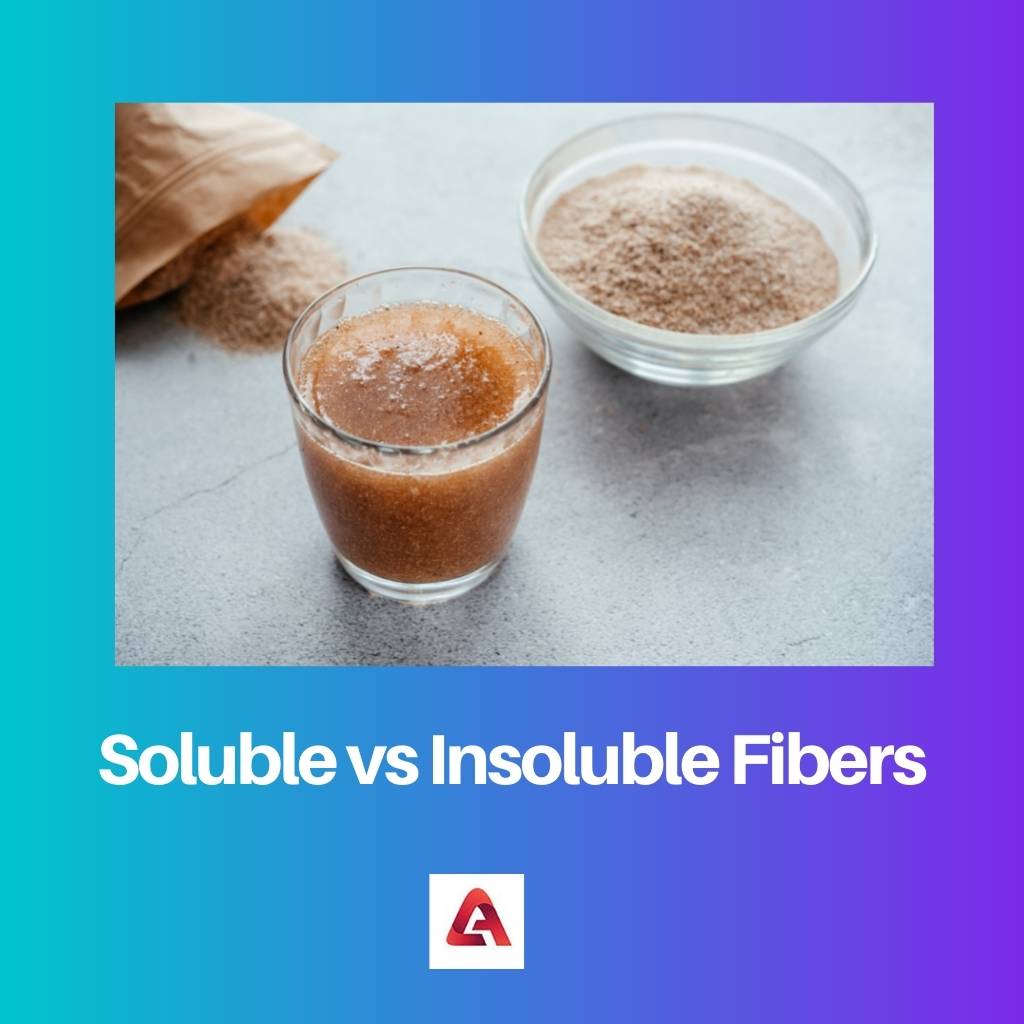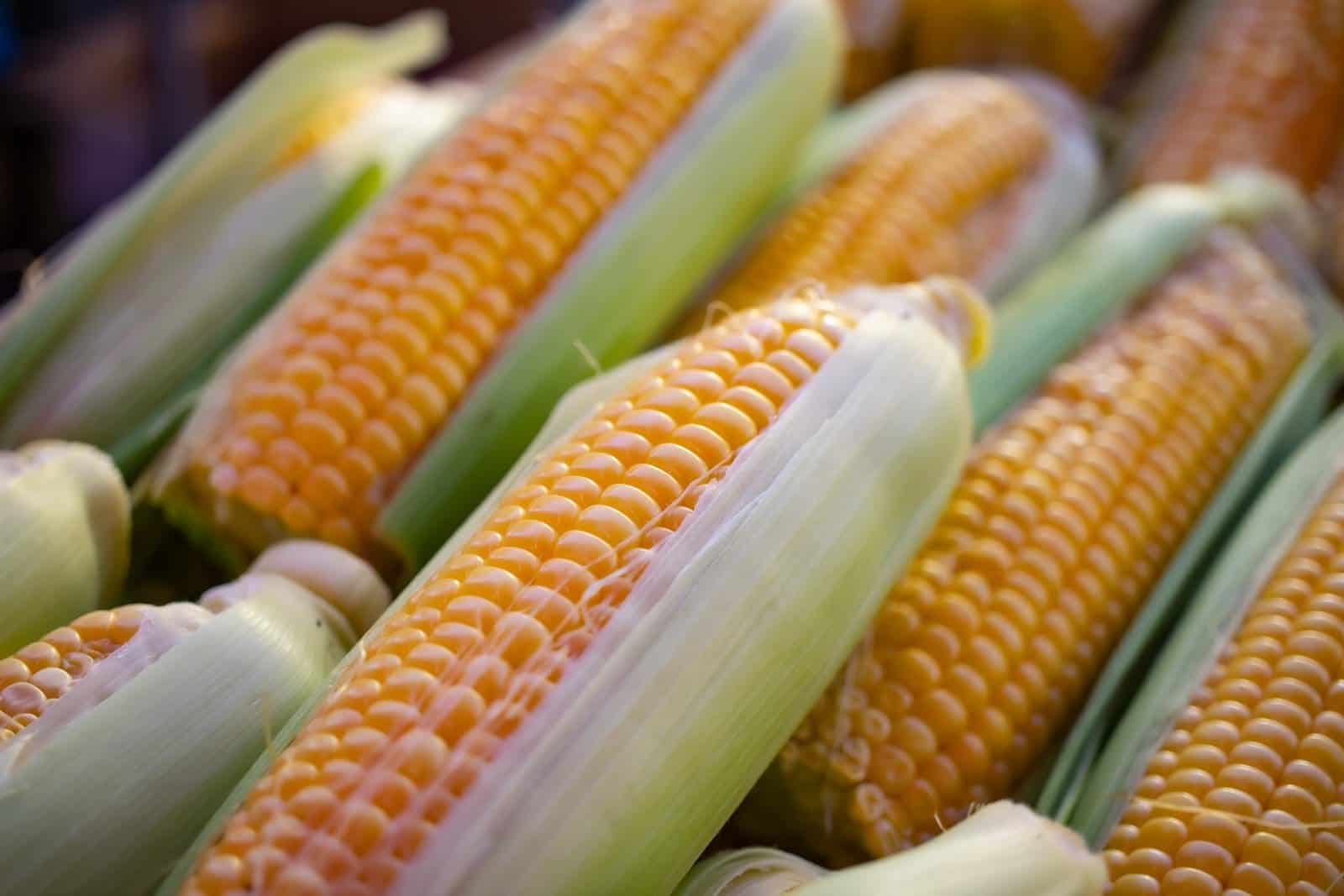Upon reading the chapter in science about food and health, we frequently stumble across the word ‘fibre’ as one of the major constituents in our diet. Its other name is roughage.
Fibre is that part of food that the body terms indigestible. Fibres are found in almost all kinds of food and mainly in fruits and veggies. There are two kinds of fibres known majorly: soluble fibres and the other is insoluble fibres.
Key Takeaways
- Soluble fiber dissolves in water, forming a gel-like substance that helps lower cholesterol and regulate blood sugar levels.
- Insoluble fiber does not dissolve in water, promoting regular bowel movements and preventing constipation.
- Consume soluble and insoluble fibers from various food sources to maintain a healthy diet.
Soluble vs Insoluble Fibers
The difference between soluble fibers and insoluble fibers is that soluble fibers, as the name suggests, are ‘soluble’ in water present in our bodies. And insoluble fibers, just as the term says, are the fibers that do not dissolve or are ‘insoluble’ in our bodily fluids.

Soluble fibres are those fibres that can dissolve in the water present in our bodies. When we take food that contains soluble fibres, we ensure good digestion.
This fibre forms a jelly-like compound that makes our food move from mouth to stomach, from stomach to large intestine. And then it is thrown out as excreta with great ease.
These types of fibres are found in many fruits and veggies and ensure good health.
On the other hand, insoluble fibers are unable to dissolve with the water present in our bodies. It also doesn’t dissolve in the stomach acids and fluids.
Every fruit, vegetable, various kinds of pulses, oats, and brown rice also contain these types of fibres. They have another function.
They help water retention in excreta and thus help in the process of excretion. Both these fibres together add to the weight of food. Along with their functions, they make digestion an easy procedure.
Comparison Table
| Parameters of differentiation | Soluble Fibers | Insoluble Fibers |
|---|---|---|
| Solubility in water | These types of fibers can be easily dissolved in water present in our bodies. | This kind of fiber cannot be dissolved in the water present in our bodies. |
| Solubility in the stomach (gastrointestinal fluid) | These fibers can be easily soluble in our stomach and intestinal fluids. | These are not soluble in stomach and intestinal fluids. |
| Benefits | These form a jelly-like substance that helps in the easy movement of food down the digestive tract. | These form a jelly-like substance that helps in the easy movement of food down the digestive tract. |
| Compounds included | It mostly contains compounds such as cellulose and Hemicellulose. | These contain resistant starches, dextrins, glucans, and oligosaccharides. |
| Calories | It releases some calories while digestion takes place. | It releases some calories while digestion takes place. |
What are Soluble Fibers?
This fibre, as the name suggests, dissolves or is soluble in our stomach and intestinal fluids. They help to form a jelly-type substance that easily carries the food from mouth to stomach, from stomach to the intestines, and then to the excretory system.
These fibres, along with insoluble fibers, are found in a wide variety of vegetables and fruits. We can get these fibres in some other food items.
They are peas, apples, beans, oranges, carrots, lemon, radishes, barely, muesli .etc. So we can get our hands on these fibres, which is a key to good digestion.
It has other crucial benefits. The first benefit is that when it mixes with the food that we take. It changes into a jelly kind of compound that lets the food move down from the mouth to the end of the digestive system.
This process helps us have good digestion and extract the best from what we eat. Also, this compound helps gut bacteria (which is good for health) to function, and thus the system remains safe and clean.
They also prevent any chances of our stomachs getting bloated. Eating soluble fibre doesn’t let our body take in or absorb more fatty acids, And maintains a lean muscle mass in our body.
Because of this ability, it also keeps cholesterol levels low and checks the blood sugar level in the body.
Providing all these health benefits, also reduces the chances of cardiac arrest as it prevents fat blockage in the arteries by not allowing fats to be absorbed when we take in food.

What are Insoluble Fibers?
These are the fibers that are not soluble in water present in our body. Be it the water we take in, saliva or blood, it won’t dissolve in it. Also, it is not able to dissolve in the fluids of our stomach and intestines (gastrointestinal fluids).
Their function is different from that of soluble fibers as insoluble fibers add weight to the food and help in water retention in our excreta. It helps in the completion of our digestion, and its function is mostly seen in the large intestine.
These, too, are mostly found in a variety of fruits and veggies. Some examples where these fibres are present are almonds, cashew nuts, cucumbers, celery, drumsticks, guavas, coconut, brown rice, turnips, green peas, carrots, potatoes, and spinach.
These foods are easily available at low prices and can do wonders if added to our diet.
Just like soluble fibres, insoluble fibre also has many benefits, first, it aids in the digestion of food and helps the excreta to absorb water and be easily thrown out of our body.
This, in turn, prevents constipation, haemorrhoids (piles), and bulging of the walls of the large intestine. It also helps the good bacteria of the gut to start functioning. It also checks the blood sugar in the body.
Fibres are good for the body, but an excess of everything causes reactions, though not so severe, excessive fibre intake causes health problems like diarrhoea, bloating, excess reduction in the blood glucose levels, pain in the lower abdomen, vomiting and weight gain that might be temporary.

Main Differences Between Soluble and Insoluble Fibers
- Soluble fibres easily get dissolved in the water that’s present in our body, insoluble fibres, on the other hand, do not get dissolved in the fluid present in our body.
- Soluble fibres are also soluble in the fluids that are present in our stomach and intestines. However, insoluble fibres do not get dissolved in the stomach or intestinal fluid.
- Soluble fibres form a jelly-like complex with the food that we intake and thus aid in the process of digestion. Insoluble fibres, however, help their stool or excreta to absorb and retain water and help in the process of excretion.
- Soluble fibres are mostly composed of the compounds of Hemicellulose and soluble cellulose. But Insoluble fibres contain resistant starch, glucans, oligosaccharides, and insoluble dextrins.
- Soluble fibers, while doing their work, release some calories. On the other hand, insoluble fibres don’t release calories.



